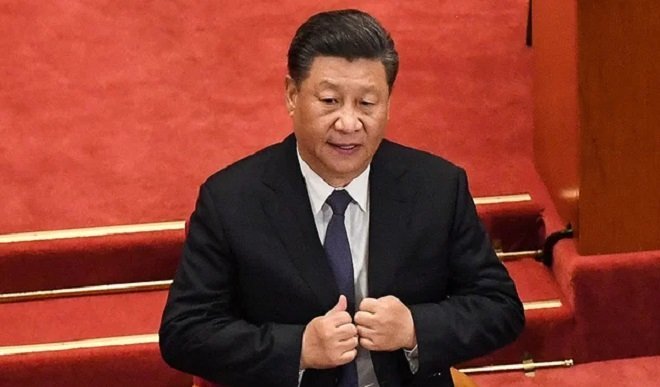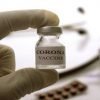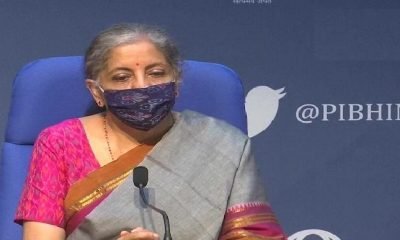Politics
Holding China Accountable for the COVID-19 Pandemic: Legal Basis and Challenges
Saumya Srivastava.
In 2002, SARS spread from China’s Guangdong province. By 2003, it had spread to 28 countries, with a total death toll of 774. But many casualties could have been avoided, had China not tried to shroud in secrecy the epidemic for several weeks after it occurred. SARS led to the new International Health Regulations of the World Health Organization (WHO), adopted in 2005 which lays down legally binding obligations it imposes in situations such as the COVID-19 pandemic.
Scholars have claimed that China’s conduct with respect to COVID-19 violated the International Health Regulations, in particular the obligations of timely notification and information-sharing in Articles 6 and 7. They allege that had China complied with these obligations, there would arguably be exponentially fewer cases of COVID-19 today. Hence, there seems to be a prevailing sentiment that China “can and should be sued for the enormous damages they caused to the world”. Some also allege that the novel coronavirus may have been a manufactured tool possibly to wage bio-war against the rest of the world.
The ordeal of homecoming: Plight of migrant workers journey
First we must deal with the question: Is COVID-19 a biological weapon? Biological weapons are one of the three categories of weapons of mass destruction (WMD), as opposed to conventional weapons. Biological weapons are devices that project, disperse, or disseminate disease-causing organisms or toxins to kill or harm humans, animals, or plants. They consist of two components: a biological agent, and a means to deliver it.
Article 1 of the 1972 Biological Weapons Convention provides: “Each State Party to this Convention undertakes never in any circumstances to develop, produce, stockpile or otherwise acquire or retain: (i) microbial or other biological agents, or toxins whatever their origin or method of production, of types and in quantities that have no justification for prophylactic, protective or other peaceful purposes; (ii) weapons, equipment or means of delivery designed to use such agents or toxins for hostile purposes or in armed conflict.”
Ott platform Netflix to start cancelling inactive subscriptions
The problem with proving such a claim is two-fold. Firstly, there isn’t enough reliable evidence to prove that the virus is a concoction of science, i.e., a lab generated virus. Most evidence and reports point to instead it being an animal to human transmission via wet markets in Wuhan. Hence, it becomes difficult to establish that the virus is an entity which was “developed, produced, stockpiled or otherwise acquired or retained” for hostile purposes. The second issue is that of establishing the intention to wage war. Intention or mens rea becomes key while determining criminal liability. And this is primarily because the “means of delivery” of the virus which has resulted in this pandemic has been human-to-human transmission. It becomes difficult to implicate China with intentions of threatening the global economy or international peace and security when the initial travel of the virus was via return of people to their home countries. And then It gets further complicated as from that point onwards the spread within the borders of the countries was dependent on the government policies adopted ( for e.g. lockdown measures, healthcare capacities, provision of PPE kits etc) to tackle the same.
But this is only where the conversation of international obligation and accountability begins.
Article 75 of the WHO Constitution. Article 75 provides: “Any question or dispute concerning the interpretation or application of this Constitution which is not settled by negotiation or by the Health Assembly shall be referred to the International Court of Justice ….” Indeed, the Court itself has acknowledged that “Article 75 of the WHO Constitution provides for the Court’s jurisdiction”. Moreover, if the Court interprets Article 75 the same way it interpreted Article 22 of the CERD (Ukraine v. Russia, Preliminary Objections, Judgment, para. 113), then a State would only need to satisfy the negotiation condition in order to sue China before the Court; it would not need to go through the World Health Assembly.
How can a State frame its complaint over China’s conduct as one concerning the interpretation or application of the WHO Constitution? First, State could try to claim violations of the International Health Regulations through Articles 21 and 22 of the WHO Constitution. Article 21 grants the World Health Assembly the authority to adopt regulations like the International Health Regulations, and Article 22 provides in relevant part that “regulations adopted pursuant to Article 21 shall come into force for all Members after due notice has been given”. One could thus argue that, in light of Articles 21 and 22, China’s alleged violations of the International Health Regulations concern the interpretation or application of the WHO Constitution. The counterargument, however, would be that Articles 21 and 22 concern only the authority to adopt regulations and the process of the regulations “coming into force”, not the legal obligation of Member States to comply with those regulations.
A State could also try to claim that China has violated Article 64 of the WHO Constitution, which provides: “Each Member shall provide statistical and epidemiological reports in a manner to be determined by the Health Assembly.”
Articles 6 and 7 of the IHR contribute to determining the “manner” in which “statistical and epidemiological reports” must be provided. Article 6(2) requires State Parties, after notifying the WHO of an event which may constitute a public health emergency of international concern (PHEIC), to “communicate to WHO timely, accurate and sufficiently detailed public health information available to it …, where possible including … number of cases and deaths”. Article 7 is even broader, requiring State Parties, if they have evidence of an event which may constitute a PHEIC, to “provide to WHO all relevant public health information”. In light of the above, a State could potentially claim that China has violated Article 64 of the WHO Constitution by violating Articles 6 and 7 of the International Health Regulations.
The biggest hurdle for litigation would be that the dispute settlement mechanism in Article 56 of the International Health Regulations which provides for arbitration only in the event that China consents, which, needless to say, is very unlikely. Also, since the pandemic is of a global nature which has affected almost every country, we are faced with the pertinent question of much political consideration: Which country shall begin the process of litigation against China?
A crucial problem in international law is sanctions. Proclaiming that UN member states are responsible for their actions is easy. Sanctioning them is difficult. The possibility of COVID-19 litigation against China has generated considerable commentary but neither domestic nor international lawsuits hold any guarantee, despite the innate appeal they may hold for grieving families and aggrieved politicians. Even if the International Court of Justice (via its advisory jurisdiction) were to establish that China violated the legally-binding International Health Regulations (IHR) this would not necessarily trigger China’s legal responsibility nor the claim to money damages of the countries affected for the massive consequences wrought by the spread of the virus beyond its borders.





















